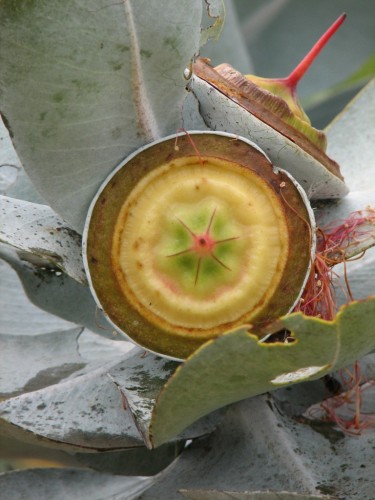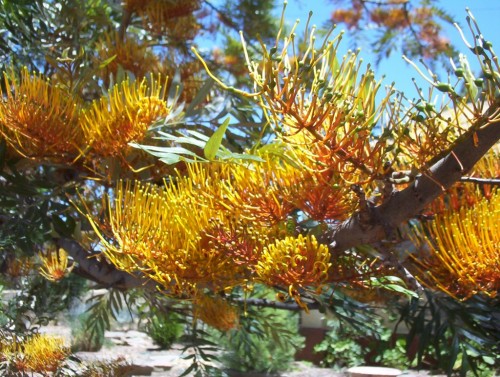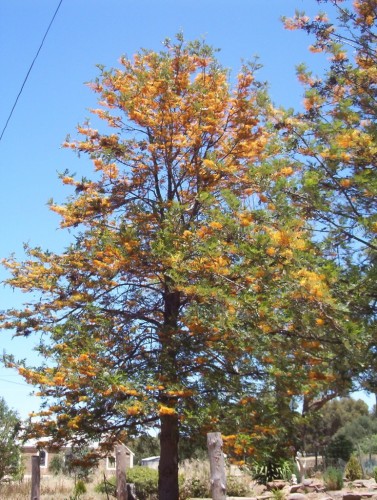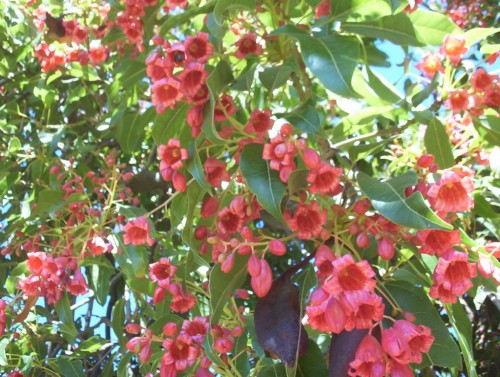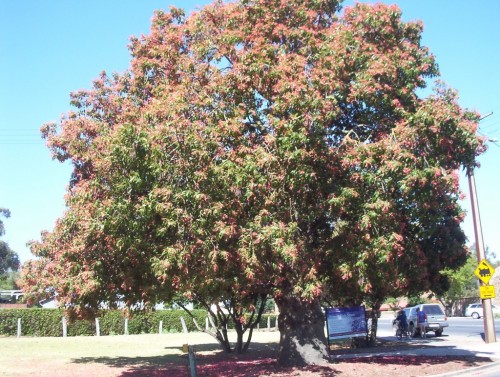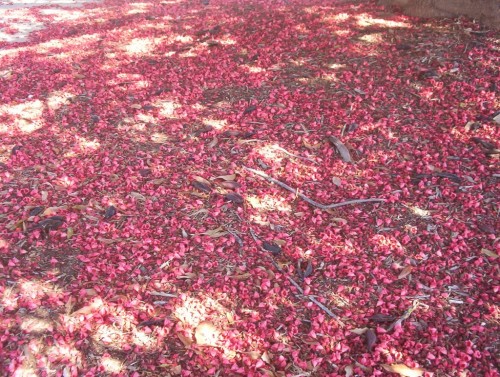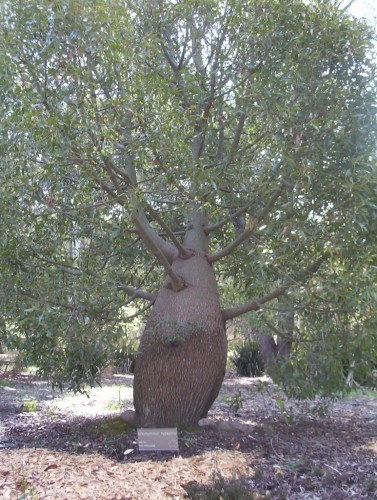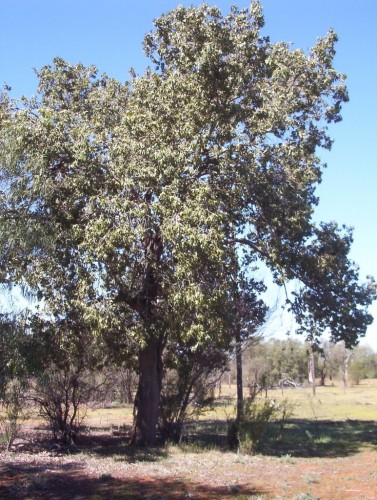Eucalyptus macrocarpa (Mottlecah)
This beautiful shrubby tree has been the subject of some comments on an earlier article that I wrote. I responded to one reader who asked about the life span and hardiness of the tree…
“I can tell you from experience that Eucalyptus macrocarpa is a long lived plant. One that I know, at the end of a school playground, continues even now after 25+ years of being trampled, swung in, climbed through, footballs thrown in etc. Another near where I live is about 23 years old. These are mallee plants ie, shoot from the base when broken or cut or burnt, and have multiple stems. They need good drainage and airflow around them otherwise they tend to suffer from sooty mould. Eucalyptus macrocarpa is well worth trying for the flower display. It would make good large pot plants if you cannot give it the conditions that is needed.â€
Another reader’s comment would interest Australian plant growers.
From Ron…”I have grown Eucalyptus macrocarpa in my garden for more than 20 years. They seem to thrive on the hot/dry summers we have here in Escondido, CA. (We only average about 12 inches (300mm) of rainfall a year and recently we haven’t even seen that. Our rainy season in in the fall and winter.)
I rarely ever water the plants and they are very adapted to drought once established. My trees (very shrubby, multibranched, 12ft.(4metres) high) are absolutely beautiful. Although the oldest of my 3 trees is a little more than 20 years old, I know of several in San Diego (about 20 minutes from my house) that are more than 35 years old and I suspect thay live a lot longer than that.
So they have a very long lifespan.”
The conditions sound like mine here except that we are experiencing drought at the moment and have no subsoil moisture. Even the native plants are struggling. (The photo above shows some sooty mould on the leaves.)
More on this plant here.
Grevillea robusta
These make good windbreak and screening plants. Many are grown in house yards but as they can be rather large need to be kept away from the house. A general rule is that the tree needs to be as far from the house as the tree’s ultimate height.
Grevillea robusta is the plant onto which other species of grevillea are grafted.
Brachychiton (Kurrajong) species
This is a tree of lower rainfall areas and quite harsh summer conditions, appearing in western New South Wales.
The flowers are like small bells in this delightful bright pink colour, followed by black boat shaped seed pods. Last week there was a carpet of spent flowers under the canopy of the tree.
Brachychiton rupestris (Bottle Tree)
The trunks of the trees are prominently bottle shaped with large specimens having a diameter up to 2m (6 feet). The tree is hardy in most areas once established and of course would appreciate some water during hot dry periods. Young trees are slow growing and make attractive and unusual pot plants for some years.
This tree is an important fodder tree for stock during dry periods. The Aborigines ate the young roots and seeds either raw or roasted.
.
Brachychiton populneus (Kurrajong)
These trees are semi deciduous, losing their leaves just before flowering. This particular species has bell shaped cream flowers, blotched with red on the inside. Young leaves are tinged with pink. They are very easy to grow and tolerate a wide range of climatic conditions and soils. Although very drought tolerant, they appreciate water during the summer. This species is frost hardy.
Because they are slow growing while young, they make excellent pot plants and are used for indoor decorations.
Further information can be found here.
